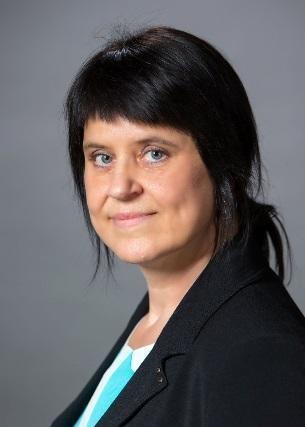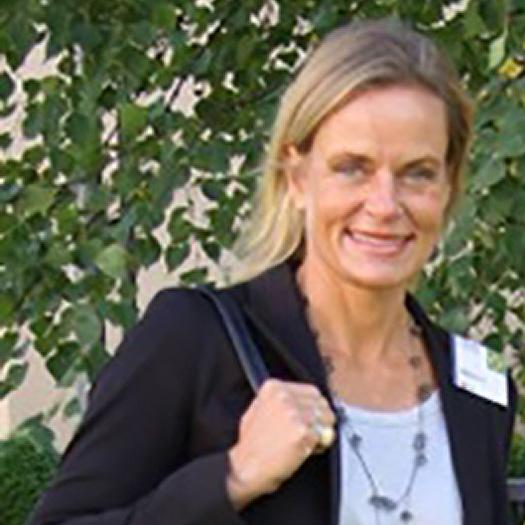
Irma Kunnari
Context

HUS – The Hospital District of Helsinki and Uusimaa, in Finland, a joint authority formed by 24 municipalities, is a major player in recruitment. HUS hospitals employ over 23,000 highly qualified professionals. The biggest personnel group, nursing staff, accounts for over fifty per cent of all employees. HUS also provides work for many other professionals, like physicians, social workers, psychologists, therapists, physicists and researchers, and other personnel, such as nutritional and sanitation personnel, logistics and IT professionals, maintenance and administrative personnel.
This article is based on the interview of Pia Keijonen, Manager of Human Resources, who works in Human Resource Director’s team at the group administration unit of HUS. In her work, she creates guidelines and principles for staff development, develops recruitment operation models, gives support to managers in recruiting as well as orientation and introduction of new hires. Furthermore, she educates and communicates internally related to competence development, and currently, develops networking models with schools for pre-recruiting. Keijonen (2017) highlights the importance to reach the best possible experts and workers, which is sometimes hard, as a hospital is not recognised to be a multi-professional employer. Further, it is essential to create a match between personal competences and the current and future requirements of the work. Career paths in this large organisation can be very diverse, as nowadays it is not always enough to have expertise only in one field, but different competence areas, such as nursing and ICT need to be combined. How can ePortfolios help in all that?
Job recruitment setting – interests of the employer
At HUS, the recruitment is carried out both internally and externally, and it usually consists of a digital application form and an interview, sometimes also psychological evaluation. The manager starts the process by making the recruitment plan with persons who will be involved. Together they design how the aptitude of applicants will be evaluated. In many jobs at HUS, you need to meet strictly defined professional qualifications, which can be measured objectively. However, it can be questioned whether a person with thirty years of experience is better qualified than one with twenty years of experience. The challenge can be that evaluation has been relying too much on the amount of experience. Sometimes after recruitment, it has been recognised that important personal skills are missing, such as meta skills or motivation to learn new competences.
In recruitment, the aptitude of applicants needs to be evaluated related to specific work context and community, or special characteristics needed. It is suggested that managers use different kind of practical tests or demonstrations, which also assess other skills like stress control, swiftness, knowledge- management, creativity or collaboration. Some of the competences can be assessed in face-to-face situations, but some tasks can be given to the applicants beforehand. Further, learning and developing on the job is crucial.
“That is why I emphasise, that in the recruitment it is very important to identify the “shining stars”, persons who have the vision and hunger, motivation and inspiration to develop, and the self-reflection skills. Recruit somebody, not just for this actual job, but also to the future.“ (Keijonen 2017.)
Job recruitment setting on the basis of an ePortfolio – transparency for the working life
Even though portfolios or ePortfolios are not widely seen or used in job recruitment at HUS, many benefits and possibilities can be recognised (Keijonen 2017). For instance, they could work well as a showcase in demonstrating professional experience and competences. If all the relevant information were in one place, they could make recruitment easier and quicker. They could also improve the aptitude evaluation, as in the interviews there is not enough time to explore everything. In an ePortfolio you can demonstrate versatile evidence of your personal strengths in the professional field, as well as present your individual interests and characteristics. Further, one benefit of an ePortfolio could be that inexperienced young applicants can have another way to demonstrate the evidence of their competences, as sometimes the job interview situations are too demanding to show their best.
In a digital portfolio Keijonen (2017) would like to see evidence and examples of reflection skills, professional activity and motivation, writing and theorising skills, and capability to understand vague and complex phenomena. She encourages applicants to recognise their personal life experiences, which can be very meaningful from the perspective of professional development. For example, what have you learned as a patient or when helping your relatives handle serious diseases? She also reminds of the importance of contextualising your prior competences. It is not enough to list places where you have worked, but also to demonstrate, for example, how challenging target groups you have handled and what kind of role you have had in the work community. Furthermore, if you have worked in a very innovative and talented community, you have perhaps learned a lot more. These are topics you can present in your digital portfolio in creative ways.
Work life as an actor in supporting the creation of eportfolios
If in recruitment and work life ePortfolios were systematically utilised, the motivation for students to create them would be stronger. There are also other possibilities regarding professional development, replacement and building new career paths. Digital portfolios could motivate the staff to update their professional competences and make them reflect personal career development, as there are so many possibilities to build your career. Keijonen (2017) recognises the need to document hidden competences and personal interests of employees. Digital portfolios could work as an integral part of development discussions, as a tool for professional development and help employees to recognise their own strengths and interests.
“Digital portfolios can work well in reflecting your own competences and build your career. For the employer they can make recruitment and replacement more successful.” (Keijonen 2017.)
Featured image of the article: (c) Matti Snellman.

This article was produced in the Erasmus+ (KA2 action) funded project “Empowering Eportfolio Process (EEP)”. The beneficiary in the project is Häme University of Applied Sciences (FI) and the partners are VIA University College (DK), Katholieke Universiteit KU Leuven (BE), University College Leuven-Limburg (BE), Polytechnic Institute of Setúbal (PT) and Marino Institute of Education (IE). The project was implementated during 1.9.2016–30.11.2018.
Author

Irma Kunnari, M.Ed (PhD Fellow in Educational Psychology) Principal lecturer, pedagogical developer and teacher educator in Häme university of applied sciences, School of Professional Teacher Education. She currently works as a project manager in Empowering Eportfolio Process (EEP) project, and has a broad experience in developing higher education and the relationships between HE institutions and the work field.
References
Aggarwal, R. (2011). Developing a Global Mindset: Integrating Demographics, Sustainability, Technology, and Globalization. Journal of Teaching in International Business, 22, 51–69.
Barrett, H. C. (2007). Researching electronic portfolios and learner engagement: The REFLECT initiative. Journal of adolescent & adult literacy, 50(6), 436–449.
European Union. (2010). 2010 joint progress report of the Council and the Commission on the implementation of the ‘Education and Training 2010 work programme’. Official Journal of the European Union, C 117.
Keijonen, P. (2017). Manager of Human Resources. The Hospital District of Helsinki and Uusimaa. Interview 28.3.2017.
Kunnari, I., Laurikainen, M., Pires, A. O., & Rodrigues, M. R. (2017). Supporting students’ ePortfolio process in Higher Education. HAMK Unlimited Journal 12.12.2017. Retrieved 20 February 2018 from https://unlimited.hamk.fi/ammatillinen-osaaminen-ja-opetus/supporting-students-eportfolio-process-in-higher-education





